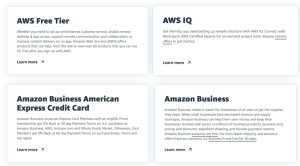— January 10, 2019

Pexels / Pixabay
The proverb “a stitch in time saves nine” goes back centuries but the principles are just as applicable to any modern operations. Unfortunately, too many facilities management departments still operate in a reactive manner, having to quickly put out fires when critical issues arise. This is the case even though common sense (and old adages) says that preventing an issue from arising is far more cost-effective vs. having to fix an issue, especially in an emergency basis.
In order for facility management to play a more strategic role in modern business models, FMs must do everything they can to shed their department’s traditional “reactive cost center” image and proactively drive the economics that can significantly impact the bottom line – because they can! However, without the right data and the operational insights they can reveal, acting strategically is nearly impossible.
Instead, FMs are resigned to making repair-or-replace decisions largely on “gut feel” and “guessing” rather than precisely “knowing”. Multiply this across a 100-location enterprise, and these reactive decisions can have a serious impact on your bottom line.
Making better use of the data available to them (or, more commonly, finding a true source of comprehensive data and benchmarks) is still largely a greenfield area for FMs and their businesses. A Forrester Research survey found that only 12% of data in organizations today is being analyzed, and the majority of organizations are not using analytics efficiently.
Teams in these organizations are spending most of their time collecting data unsystematically, instead of analyzing and gaining insights. If the head of facilities wants to get the most out of their data, they need to embrace tools that not only capture data in an automated, consistent fashion, but also convert them into insights that are meaningful and available when they need it.
Let’s take a look at four types of data insights and how you can use them to their advantage:
Four Types of Analytical Insights
Many enterprises have an enormous amount of waste and inefficiency within facility management. In fact, executives face billion-dollar deficits that build up over time because of the inability to improve the decision process. Today’s technologies should make reporting a breeze and empower the business user to improve decision making through analytics. Gartner explains four key types of analytics:
- Descriptive Analytics to see what happened
- Diagnostic Analytics to understand why it happened
- Predictive Analytics to forecast what will happen
- Prescriptive Analytics to influence or make it happen
Facility data analytics has to go beyond just descriptive reporting. Digging into diagnostic, predictive, and prescriptive analytics enables managers to go through the whole data discovery process, from creating forecasts to providing actionable insights throughout the workflow.
Ideally, your analytics solution is also able to fully leverage all available facility data. Consider a machine-learning powered decision engine, which makes it easy to identify trends and patterns that lead to actionable insights and more automated and precise recommendations.
The head of facilities and managers can use insights gleaned from analytics to make data-backed decisions with confidence, instead of relying on their gut and hoping for the best.
Key Benefits of Using Facility Data Analytics
The current state of facilities management requires advanced analytics in order to get the most out of your operation. Data insights not only help day-to-day operations at the facility manager level, but also impact “big picture” business goals like reducing cost and improving efficiency. Let’s take a look at three of the most important ones:
Improved Efficiency & Work Quality
Analytics can give the facility management department a comprehensive view of their operations and projects, providing details on the current state of assets, resource distribution, and repair and maintenance volumes. This information can be leveraged to reduce bottlenecks and simplify operations for everybody in the organization.
Analytics can also help improve work quality and performance standards by allowing managers to audit contractor performance, Service level agreement (SLA) compliance, and issue resolution times. In addition, the facility team can set key performance indicators (KPIs), share these insights with their partners, track progress and take action when necessary.
Reduced Spend
Wasteful spending and allocation of time can be crippling for an enterprise in the long run. Analytics help the facilities team control costs by improving visibility into how much they are spending, as well as invoice, proposal, and work order volumes – all of which can be organized by metrics like supplier, customer, trade, category, district, or region.
Taking a step back and analyzing spend data for all your facilities will assist with creating benchmarks across locations and trades. Managers can use analytics to identify opportunities for reducing spend or control costs. A clear plan of action and potential savings can then be communicated up to the C-suite to showcase how facility management changes impact the business’ bottom line.
Make Smarter Decisions
Executives and their heads of facilities need to improve visibility into their operations and analyze information on investments needed across their locations and assets. For instance, you need the right data to make an informed asset repair vs. replace decision. For certain assets, making the wrong decision can have major impacts on your ability to stay within the budget and optimize spend.
Analytics also help predict the financial outcome of projects. When the head of facilities successfully analyzes the data and the results become quantifiable, they can communicate with the C-suite and show how much value analytics and data collection can have for facility management.
Final Thoughts
Facilities operations are ripe with data: millions of transactions processed monthly and billions in spend each year has generated a vast expanse of information that the head of facilities can take advantage of by leveraging analytics.
From the perspective of an executive, it’s also important to make sure staff can use the analytical tools you have chosen to the best of their ability. Otherwise, your business will not reap the full benefits that robust analytics can offer. So, when choosing an analytics platform, make sure to keep in mind how it will fit into your current operations and what sort of insights you’ll be able to garner.
Business & Finance Articles on Business 2 Community
(61)







